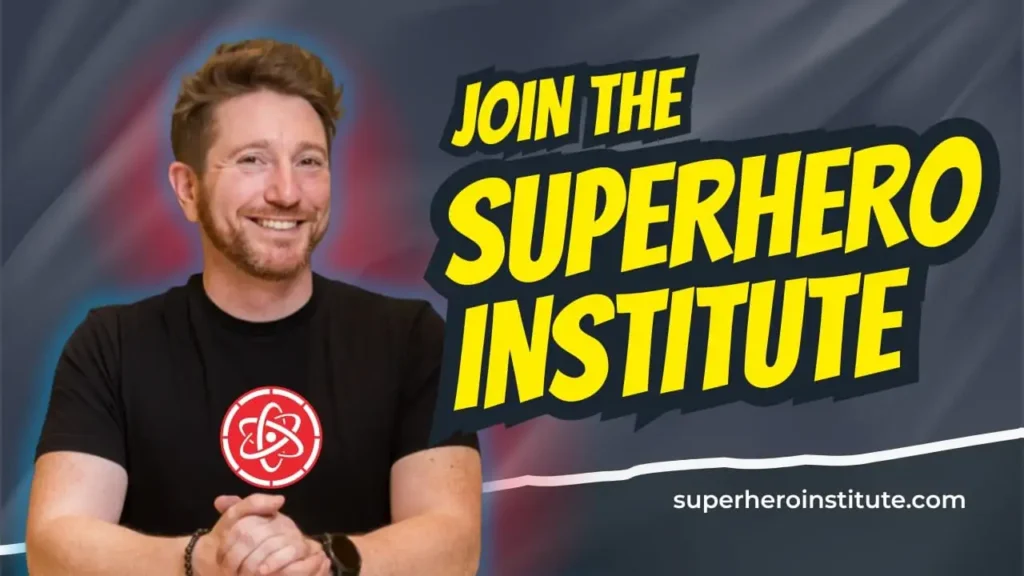Content Atomization and the Efficiency Principle
Today, we’re going to talk about how to use one piece of content to create multiple pieces of content.
This is known as content atomization.
The primary purpose of content atomization is to get more bang for your buck and more life out of your content. The majority of the time you are spending on your content is on the substance of the content, not the form of your content.
So after spending considerable time creating a video, a podcast, or a blog, instead of immediately starting over to create new full sized assets, why not convert content you’ve already created into another format?
I’m going to start by showing you content atomization in action. Then, at the end, let’s talk about efficiency.
✉️ Get the Infinite Impact
Join thousands getting weekly wisdom on unlocking hidden potential, building meta-abilities, and creating meaningful change through practical frameworks you can use immediately.
1. Start with a Video…

I decided to do this by recording a live video that I published on Facebook, Twitter, and Youtube. One day Linkedin will approve me for live-streaming.
The video took me about 10 minutes to publish.
I then edited this video to produce something more polished.
2. Use the Audio to Create a Podcast


I extracted the audio and pulled it into Garageband. Then I created a simple intro and outro. Since this isn’t an actual podcast of mine, I quickly made a cover image for the podcast…as if it was real.
This took me around 10 minutes.
3. Chop the video into smaller pieces for additional videos

This took me about 10 minutes in Final Cut.
4. Create Audiograms using the audio

Audiograms are super versatile as they can be published across most social media channels and are more dynamic than a static image. I used a web app called Headliner to make these.
These took me about 10 minutes to make.
5. Take the video and turn it into a blog post

You are here.
I’ll tell you how long this took at the end. Also, here’s Rev.com that I mentioned in the video. Rev can help with your transcription.
6. Use the video and blog post to create status updates

Status Update #1
Status Update #2
Status Update #3
These took less than 3 minutes to write.
7. Pull quotes from video or blog to create social graphics

Use your status updates, pull quotes from the video, or just write something new. You can put it over a screenshot, a headshot, or a totally new graphic.
I used Canva to make these and it took me a total of 5 minutes.
8. Turn the content into slides

Creating these slides might’ve taken me 2 minutes since I already had the graphic designed.
Add the original graphic in add we’ll call it 15 minutes total.
9. Send the whole thing out as an email newsletter

NOTE: I opted not to do step 15–the video voiceover with the slides–only because of the amount of background noise in my house right now.
You could be getting this and so much more by becoming a subscriber. Subscribe now.
The email goes out automatically from the RSS feed of my blog post, so technically, the email newsletter took me about 5 minutes to set up 4-5 years ago.
Let’s talk about efficiency…
The Efficiency Principle is a term used in economics that loosely requires meeting demand at the lowest possible cost with the greatest possible benefit. In short, “best bang for your buck.”
Content Marketing requires both great content and excellent promotion. By efficiently converting great content into multiple other formats to be used in the promotion of the original piece of content, you are maximizing your exposure at the lowest marginal effort.
Your objective is to find the most efficient pathway toward doing this so as to minimize your effort and avoid duplication of effort. Therefore, seek to maximize the outputs that are purely derivative of previous content reformatting. The less new original content you need to create to promote the original, the more efficient you are.
I started with a 10 minute live video.
Adding the 15 minutes it took to assemble this in a blog post, I spent a little over one hour to turn that one video into 14 additional assets with very little new content created…just derivative content.
I have content to promote this post for at least a full week, if not longer. I have unique pieces of content for Facebook, Twitter, Linkedin, Instagram, Instagram stories, Slideshare, and more…
This is me doing it by myself. If you can organize and align your team, each week you could easily be producing 15 pieces of content.
Need help?
If I can do all of this in a little over one hour, imagine what I could do to help your team build this process.
I hope you enjoyed this post!
If you liked this post, then you will LOVE my newsletter (The Infinite Impact)
and my learning community (The Superhero Institute).





One Comment